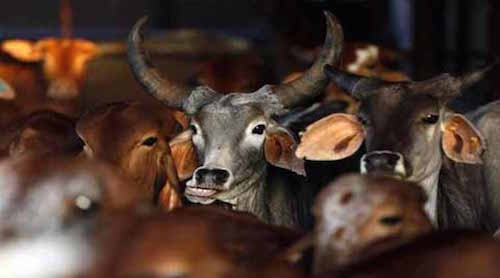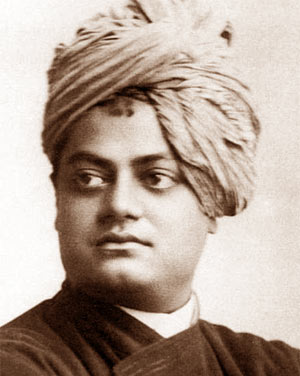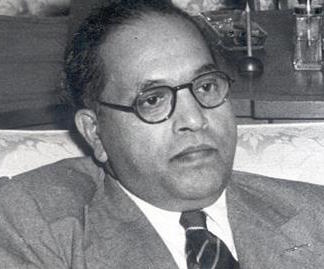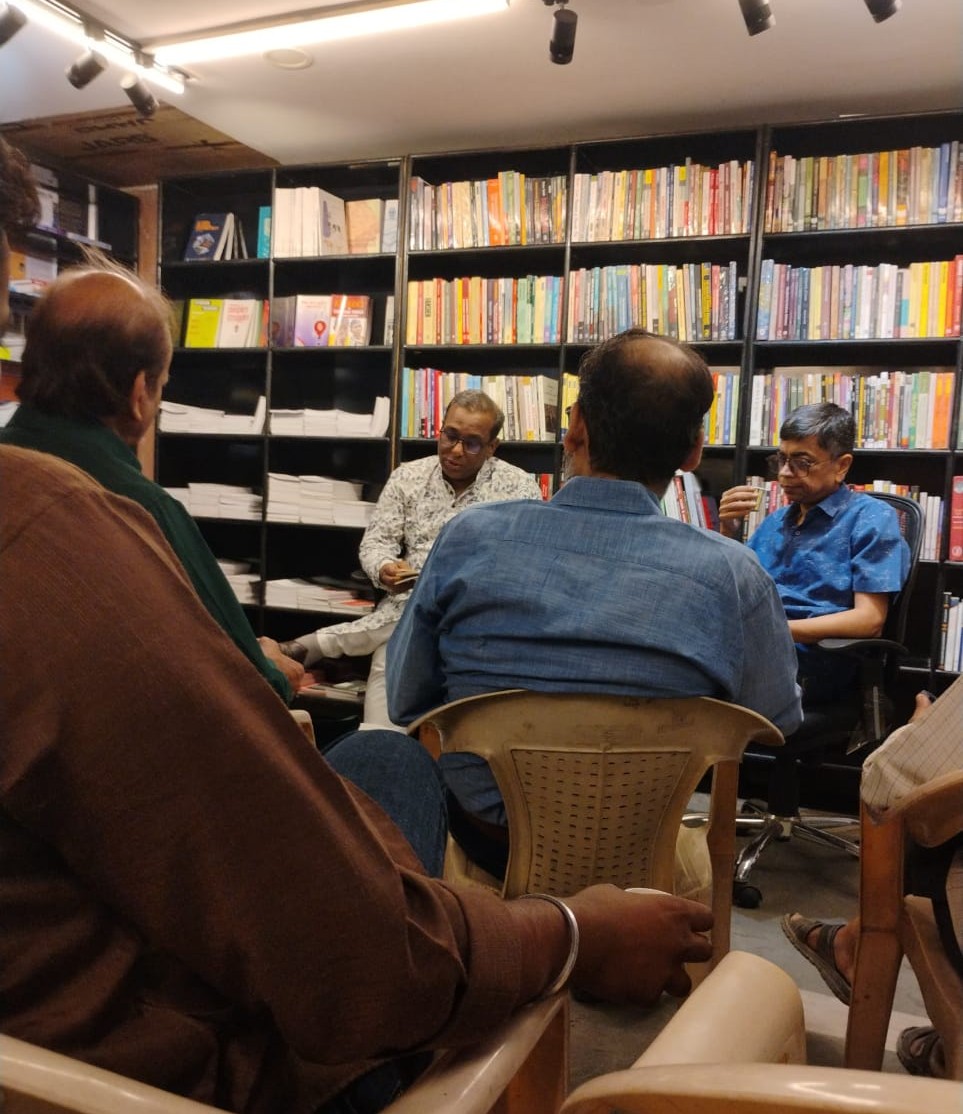The makers of the Constitution of India did a favour to the savarna Hindus by inserting an article (Article 48) in Part IV of the Indian Constitution, the Directive Principles of State Policy (DPSP). In keeping with the agrarian nature of Indian society in 1950, this article deals with the “organization of agriculture and animal husbandry”. It asserts that the “State shall endeavour to organize agriculture and animal husbandry on modern and scientific lines and shall, in particular, take steps for preserving and improving the breeds, and prohibiting the slaughter of cows and calves and other milch and draught cattle [emphasis added]”. The contradiction in the highlighted words is obvious because without the selective culling of livestock, ie, weeding out the bad and keeping the good, its breed cannot be improved on “modern and scientific lines”. Obviously the process of natural selection does not work for domesticated cattle and India does not have enough natural predators to do this job. An article on “Protection and improvement of environment and safeguarding of forests and wild life” (Article 48A) was inserted in the DPSP by the Constitution (42nd Amendment) Act of 1976. This says that the “State shall endeavour to protect and improve the environment and to safeguard the forests and wild life of the country”.
 As we shall see from the facts below, large herds of assorted stray cattle, a consequence of Article 48, threaten India’s rural, urban and forest environment. This is largely on the basis of the contradictions within Article 48 and between Article 48 and 48A. Further, the distorted practice of the Article 48 violates the right to livelihood as part of the fundamental right to life – old bulls and oxen are neither milch cows nor calves. Old and weakened bulls and oxen are also not draught animals. Cow slaughter is banned in many Indian states but the Maharashtra Animal Preservation (Amendment) Bill 1995 passed in early March 2015 and the Haryana Gauvansh Sanrakshan and Gausamvardhan Bill (2015), which lay down heavy fines for cow slaughter ranging from Rs. 10,000 to 100,000 and prison sentences from three to ten years, are draconian and pointedly anti-Muslim, anti-Christian and anti-Dalit. Both states have sizeable populations of poor Muslims and lower castes for whom beef so far has been an affordable meat. Needless to add that malnourishment is rampant among the poor. The BJP governments of Maharashtra and Haryana have twisted Article 48 into a carte blanche and, according to a People’s Union for Democratic Rights (PUDR) statement, are promoting “a majoritarian agenda” by practically banning cow-beef. These acts are perhaps preludes to an all-India ban on cow slaughter and beef demanded by the Hindutva ideologues and leaders. The Maharashtra act extends the definition of cows to bulls and oxen but mercifully leaves out the water buffalo from its definition of cattle. It is believed that buffalo meat is inferior to cow beef and comprises only 25 per cent of the beef market. The unsung buffalo, mount of the asuras, can be slaughtered and eaten.
As we shall see from the facts below, large herds of assorted stray cattle, a consequence of Article 48, threaten India’s rural, urban and forest environment. This is largely on the basis of the contradictions within Article 48 and between Article 48 and 48A. Further, the distorted practice of the Article 48 violates the right to livelihood as part of the fundamental right to life – old bulls and oxen are neither milch cows nor calves. Old and weakened bulls and oxen are also not draught animals. Cow slaughter is banned in many Indian states but the Maharashtra Animal Preservation (Amendment) Bill 1995 passed in early March 2015 and the Haryana Gauvansh Sanrakshan and Gausamvardhan Bill (2015), which lay down heavy fines for cow slaughter ranging from Rs. 10,000 to 100,000 and prison sentences from three to ten years, are draconian and pointedly anti-Muslim, anti-Christian and anti-Dalit. Both states have sizeable populations of poor Muslims and lower castes for whom beef so far has been an affordable meat. Needless to add that malnourishment is rampant among the poor. The BJP governments of Maharashtra and Haryana have twisted Article 48 into a carte blanche and, according to a People’s Union for Democratic Rights (PUDR) statement, are promoting “a majoritarian agenda” by practically banning cow-beef. These acts are perhaps preludes to an all-India ban on cow slaughter and beef demanded by the Hindutva ideologues and leaders. The Maharashtra act extends the definition of cows to bulls and oxen but mercifully leaves out the water buffalo from its definition of cattle. It is believed that buffalo meat is inferior to cow beef and comprises only 25 per cent of the beef market. The unsung buffalo, mount of the asuras, can be slaughtered and eaten.
Arguments against the ban
The critics of this law have responded with a number of historically and socially well-grounded and known arguments. One, they have asserted that to suggest that the “Hindus” never ate beef is historically wrong and ideologically motivated – in sum, savarna Hindu nationalism is trying to reinforce the existence of an imagined community by creating a kosher meat. This process can be dated to the 19th century at least, when the Arya Samaj launched major agitations against cow slaughter with Muslims as the main target of their ‘gau raksha samitis’.
Two, the banning of beef hurts the Dalits, Muslims and Christians the most because it is a violation of their right to choose what they wish to eat and the act deprives them of a source of cheap protein. Hence, given the pitiable level of protein consumption in India compared with averages in many countries, this law is also anti-poor. Three, the butchers of cattle and traders of beef and cattle products are perceived to be generally Muslim and the BJP has deliberately targeted these people to consolidate the so-called Hindu opinion on the matter. Finally, the ban on cow slaughter contradicts economic common sense. This narrative on the probable implications of the beef ban suggests that Hindutva may have harmed the long-term interest of the holy cow by becoming obsessed with it. Almost a hundred years ago Gandhi had presciently remarked in Hind Swaraj that the cow protection committees were the greatest enemies of the cow and the ban on cow slaughter would increase and nor decrease it. Gandhi was astute enough to realize the danger of making the cow a contentious issue of religious identity between the Hindus and Muslims. He was against forcing anyone to give up beef to placate the Hindus because doing violence to humans, in his view, was worse than killing and eating cows. The draconian cow protection laws that derive legitimacy from the Constitution of India contradict the politics of persuasion and religious accommodation preferred by Gandhi.
Consequences of the ban
The Indian cattle pool will ultimately be threatened by the acts banning cow slaughter and beef. In order to understand this threat we first need a short analysis of the agrarian basis of the Indian cattle. The Indian peasantry, the largest keeper of cattle in the country, has selectively bred and used cattle over centuries. India has several breeds of excellent bulls and cows thanks to this selective breeding. The peasants know that when bulls, oxen and cows become old they yield food, leather, etc, to communities not engaged in agriculture. In an economy where the peasantry is usually cash-strapped the sale of unproductive and surplus cattle to butchers and cattle traders is an important source of cash. Culling of useless cattle leaves the grazing grounds and expensive fodder for the useful, virile and milch cattle. Acts that outlaw bovine slaughter will have a direct impact on the supplementary peasant incomes in the country, multiply the useless component of the country’s cattle population and make fodder more expensive. Such acts are irrational and detrimental to the country’s economic progress.India has the largest population of stray cattle in the world. The facts mentioned above will increase this population and harm farming, which will shrink in any case because of the massive land acquisition contemplated by the government. I am told that in hill states like Himachal Pradesh large herds of stray cattle pose a grave threat to cultivation. These herds vanish into the woods in the daytime only to return at night to damage and sometimes finish off the crops. The herds are safe in the woods because natural predators like panthers, wolves and tigers have almost vanished. In a country where the forest cover is precarious, it is environmentally suicidal and unhealthy to have huge herds of stray cattle roaming around and grazing fearlessly. Housing stray cattle is a gigantic problem – they consume scarce resources in a country where millions of absolutely poor and socially deprived people are denied access to those basic facilities without which no one can even dream of a decent modern life. Acts proscribing cow slaughter and beef are anti-environment and anti-health. Imagine methane-smelling smart cities, its streets covered with cow dung and urine, and cattle munching away at garbage.
Unproductive cattle is a source of meat, leather, etc. The disposal of dead cattle will become a ticklish problem in view of the new laws. The municipality services in most states do not reach the villages and semi-urban settlements, where cattle, in due course, will die. Due to these laws skinning dead cattle will become dangerous. Communities and individuals found skinning dead cattle will be accused of being in possession of beef – something the Indian police will look forward to. The poor skinners, to the advantage of communalism, will be accused of cow slaughter. This may help the BJP-RSS in the short run but the rising violence emanating from the manufactured politics of beef will ultimately go against the state governments, whose record of maintaining law and order is dismal. The ban will drive beef trade underground and, as with liquor in times of prohibition, spawn a thriving black market with state connivance. The emergence of a “beef mafia” or “beef underworld” in the near future cannot be ruled out. This mafia might be traced by the Indian state to the usual “foreign hand”. The underestimated Indian buffalo, a sturdy, useful animal, will be the biggest beneficiary of the cow-slaughter ban. The peasants might breed it in large numbers for its rich milk, draught power and meat. The cow slaughter ban will make the cow a liability and the buffalo an asset.
The buffalo hide does not make for good leather, but the price of its meat will increase because cow-beef will vanish from the open market – incentive enough for the peasants to prefer the buffalo to the cow. The peasants will also keep larger herds of goats and sheep because the price of mutton will keep increasing. There is ample reason to assume that the quantity of leather produced in India will decline and quality leather will become expensive as a consequence of the above-mentioned acts. Indian producers and exporters of leather and leather products, who contribute substantially to the world market, are set to suffer losses on account of an increase in their cost of production. You do not have to be an economist to perceive that the rising cost of Indian leather exports will shrink their market and that India’s dollar earnings will fall.
India’s competitors in the international beef and leather markets will be the chief beneficiaries. The votaries of banning cow slaughter should not forget that India, till as recently as 2014, was the world’s second largest exporter of beef after Brazil. In the absence of affordable leather shoes, jackets, bags and wallets the Indian market will be flooded with Chinese leather look-alikes – toxic, plastic goods. In the 1970s, the adage “Be Indian, Buy Indian” was popularized by the government. This has been rephrased as “Make in India” by Prime Minister Narendra Modi. How a flood of Chinese synthetic leather goods in the Indian domestic market will help achieve this is anybody’s guess.
Gandhi wrote in Hind Swaraj:
 “In reality there are as many religions as there are individuals; but those who are conscious of the spirit of nationality do not interfere with one another’s religion. If they do, they are not fit to be considered a nation. If the Hindus believe that India should be peopled only by Hindus, they are living in dreamland. The Hindus, the Mohammedans, the Parsis and the Christians who have made India their country are fellow countrymen, and they will have to live in unity, if only for their own interest. In no part of the world are one nationality and one religion synonymous terms; nor has it ever been so in India… If I pull one way, my Moslem brother will pull another. If I put on a superior air, he will return the compliment. If I bow to him gently, he will do it much more so; and if he does not, I shall not be considered to have done wrong in having bowed. When the Hindus became insistent, the killing of cows increased. In my opinion, cow protection societies may be considered cow killing societies. It is a disgrace to us that we should need such societies.”
“In reality there are as many religions as there are individuals; but those who are conscious of the spirit of nationality do not interfere with one another’s religion. If they do, they are not fit to be considered a nation. If the Hindus believe that India should be peopled only by Hindus, they are living in dreamland. The Hindus, the Mohammedans, the Parsis and the Christians who have made India their country are fellow countrymen, and they will have to live in unity, if only for their own interest. In no part of the world are one nationality and one religion synonymous terms; nor has it ever been so in India… If I pull one way, my Moslem brother will pull another. If I put on a superior air, he will return the compliment. If I bow to him gently, he will do it much more so; and if he does not, I shall not be considered to have done wrong in having bowed. When the Hindus became insistent, the killing of cows increased. In my opinion, cow protection societies may be considered cow killing societies. It is a disgrace to us that we should need such societies.”
In his ‘Reply to the Address of Welcome at Madurai’, Swami Vivekananda said:
 “Each one of us will have to believe that everyone else in the world has done his work, and the only work remaining to be done to make the world perfect has to be done by himself. This is the responsibility we have to take upon ourselves. In the meanwhile, in India there is a tremendous revival of religion. There is danger ahead as well as glory; for revival sometimes breeds fanaticism, sometimes goes to the extreme, so that often it is not even in the power of those who start the revival to control it when it has gone beyond a certain length. It is better, therefore, to be forewarned. We have to find our way between the Scylla of old superstitious orthodoxy and the Charybdis of materialism – of Europeanism, of soullessness, of the so-called reform – which has penetrated to the foundation of Western progress. These two have to be taken care of … There was a time in this very India when, without eating beef, no Brahmin could remain a Brahmin; you read in the Vedas how, when a sanyasin, a king, or a great man came into a house, the best bullock was killed; how in time it was found that as we were an agricultural race, killing the best bulls meant annihilation of the race.”
“Each one of us will have to believe that everyone else in the world has done his work, and the only work remaining to be done to make the world perfect has to be done by himself. This is the responsibility we have to take upon ourselves. In the meanwhile, in India there is a tremendous revival of religion. There is danger ahead as well as glory; for revival sometimes breeds fanaticism, sometimes goes to the extreme, so that often it is not even in the power of those who start the revival to control it when it has gone beyond a certain length. It is better, therefore, to be forewarned. We have to find our way between the Scylla of old superstitious orthodoxy and the Charybdis of materialism – of Europeanism, of soullessness, of the so-called reform – which has penetrated to the foundation of Western progress. These two have to be taken care of … There was a time in this very India when, without eating beef, no Brahmin could remain a Brahmin; you read in the Vedas how, when a sanyasin, a king, or a great man came into a house, the best bullock was killed; how in time it was found that as we were an agricultural race, killing the best bulls meant annihilation of the race.”
B. R. Ambedkar wrote in Did the Hindus Never Eat Beef?:
 “From times no Hindu has eaten beef. If this is all that the Touchable Hindu wants to convey by his answer there need be no quarrel over it. But when the learned Brahmins argue that the Hindus not only never ate beef but they always held the cow to be sacred and were always opposed to the killing of the cow, it is impossible to accept their view … The adjective Aghnya applied to the cow in the Rig Veda means a cow that was yielding milk and therefore not fit for being killed. That the cow is venerated in the Rig Veda is of course true. But this regard and veneration of the cow are only to be expected from an agricultural community like the Indo-Aryans. This application of the utility of the cow did not prevent the Aryan from killing the cow for purposes of food. Indeed, the cow was killed because the cow was regarded as sacred … Among the Kamyashtis set forth in the Taittiriya Bramhana, not only the sacrifice of oxen and cows is laid down, but we are even told what kind and description of oxen and cows are to be offered to what deities. Thus, a dwarf ox is to be chosen for sacrifice to Vishnu, a drooping horned bull with a blaze on the forehead to Indra as the destroyer of Vritra, a black cow to Pushan, a red cow to Rudra, and so on. The Taittiriya Bramhana notes another sacrifice called Panchasaradiya-seva, the most important element of which was the immolation of seventeen five-year-old humpless, dwarf bulls, and as many dwarf heifers under three years old.
“From times no Hindu has eaten beef. If this is all that the Touchable Hindu wants to convey by his answer there need be no quarrel over it. But when the learned Brahmins argue that the Hindus not only never ate beef but they always held the cow to be sacred and were always opposed to the killing of the cow, it is impossible to accept their view … The adjective Aghnya applied to the cow in the Rig Veda means a cow that was yielding milk and therefore not fit for being killed. That the cow is venerated in the Rig Veda is of course true. But this regard and veneration of the cow are only to be expected from an agricultural community like the Indo-Aryans. This application of the utility of the cow did not prevent the Aryan from killing the cow for purposes of food. Indeed, the cow was killed because the cow was regarded as sacred … Among the Kamyashtis set forth in the Taittiriya Bramhana, not only the sacrifice of oxen and cows is laid down, but we are even told what kind and description of oxen and cows are to be offered to what deities. Thus, a dwarf ox is to be chosen for sacrifice to Vishnu, a drooping horned bull with a blaze on the forehead to Indra as the destroyer of Vritra, a black cow to Pushan, a red cow to Rudra, and so on. The Taittiriya Bramhana notes another sacrifice called Panchasaradiya-seva, the most important element of which was the immolation of seventeen five-year-old humpless, dwarf bulls, and as many dwarf heifers under three years old.
Published in the June 2015 issue of the FORWARD Press magazine





